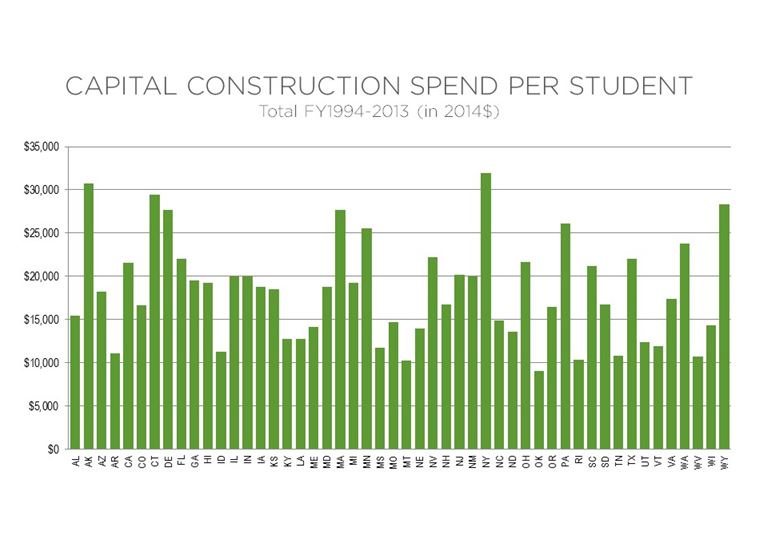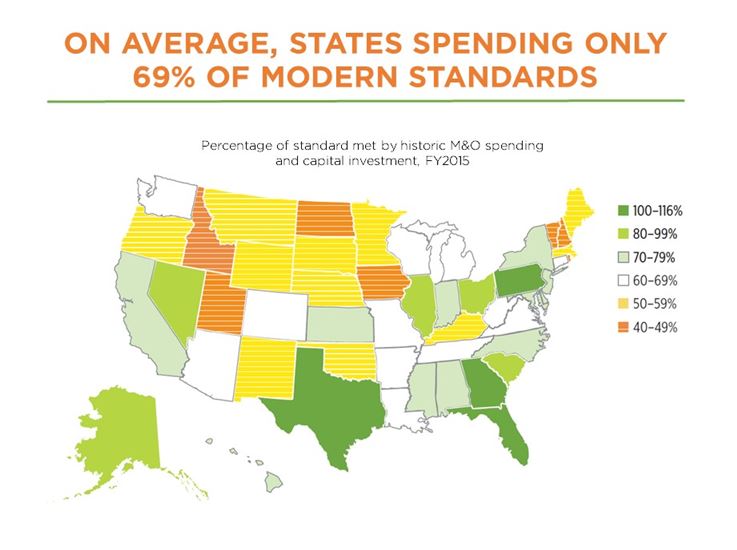2050 Infrastructure Starts Today
May 30th, 2016 | By: America's Infrastructure Report Card
As part of Infrastructure Week, one of the most compelling conversation topics was the future of infrastructure because to make it happen, the future really has to start being built today. If the trendiest topic today is the driverless car, what infrastructure has to be in place to make that work? If sensor technology is changing how we monitor everything from water to traffic, what will the infrastructure internet of things be able to replace? How can we plan for infrastructure that will lead to the future we want? While we all know that America has their hands full with today’s problems, we also must be realists – planning 2025, 2040 and 2050’s infrastructure starts by stopping endless debating and starting to implement great ideas today. This was the key take-away from the one of the Infrastructure Week events hosted by AEM with Congressman Garret Graves (Infrastructure Week Congressional Co-Chair), Mayor Sly James of Kansas City, Missouri, Ronald De Feo (CEO of Kennametal & Chair and AEM’s Infrastructure Vision 2050), Amanda Eversole (President of Center for Advanced Technology and Innovation), Steve Morrison (Amtrak Account Manager for Siemens Industry, Inc.), and Derek Woodgate (Chief Futurist at The Future’s Lab, Inc.). Mayor James had a great example of getting future infrastructure to work with the new Kansas City Streetcar Project. When they were going to put in a streetcar, they didn’t stop there – they looked at what else could be done while work was being done. This included replacing aging water pipes and installing new fiber. They also implemented new, versatile technology along the route. A great example of this is the kiosks around streetcars that will be able to help citizens with everything from simple answers to reporting incidents. The kiosks have allowed Missouri to use the data collected to create phone apps and fight crime. The project ended up almost completely paying for itself and creating jobs since companies are willing to pay for the data. When we stop thinking of infrastructure as just one project, like a Streetcar, and start taking in the larger view of what can be accomplished and enhanced, we’ll transform our infrastructure and our cities by 2050. Written with an assist by Infrastructure Week intern Nicole ErdelyiInfrastructure in the News: Issues abound during Infrastructure Week
May 20th, 2016 | By: Olivia Wolfertz
With Infrastructure Week raising awareness of the important role our roads, bridges, transit and water infrastructure play, this week’s news headlines have been powerful reminders of our need for further action. ASCE’s Failure to Act economic report continues to garner news headlines, emphasizing our infrastructure investment needs. CNBC, and C-SPAN covered the economic impact of failing to invest in infrastructure in our country, and the importance of all levels of government being involved in restoring it. Investment needs are seen in action every day when infrastructure breaks. Transit needs across the country are manifesting themselves through subway dysfunctions and disruptions. This week there was a large fire in the NYC subway that impacted thousands of train passengers’ morning commutes. The DC Metro released its SafeTrack Plan to address safety recommendations and repair the Metrorail system in an expedited timeframe. It is also no secret that deteriorating roads have a very real impact on our daily commutes. In an editorial this week, a Syracuse writer noted that it cost her nearly $200 to replace the right front tire on her car that blew out when she hit a pothole on her way to work. And AAA reported that 70 percent of motorists who plan on traveling this summer are concerned about poor roadway conditions or being stuck in traffic. As if that weren’t enough, a bridge collapsed in Oklahoma City because a truck driver did not realize he did not have sufficient clearance, causing road shutdowns and costing an estimated $50,000 in debris removal alone. Improving our nation’s infrastructure only comes when it is prioritized and properly funded. Even though Infrastructure Week, is coming to a close you can still share that #InfrastructureMatters by sending a letter to your elected officials.Infrastructure Week Events to Check Out
May 12th, 2016 | By: America's Infrastructure Report Card
There’s a great line up of events happening for Infrastructure Week! See what’s happening near you!Infrastructure Week Calendar of Events
U.S. School Facilities Are $46B Away from Modern Standards
March 29th, 2016 | By: America's Infrastructure Report Card
Every year the U.S. is spending $46 billion less on school facility construction and maintenance that is needed to keep our kids, teachers and staff in safe and modern facilities. This is the new finding from the State of Our Schools report which looks at the condition of the schools we send 1 in every 6 Americans into every day. Almost half of America’s public school buildings were built to educate the baby boomers – a generation that is now retiring from the workforce. Public school enrollment is projected to gradually increase through 2019, yet state and local school construction funding continues to decline. While what is taught in schools is often the focus of elected leaders, it’s clear that the buildings should also be part of the conversation.
Here are a few charts that show how your state stacks up in funding and supporting modern school facilities.


 Want to find out more? Read the full State of Our Schools report. Read the Washington Post coverage of the new report or take a minute to tell your elected officials who make decisions on schools about this new report.
Want to find out more? Read the full State of Our Schools report. Read the Washington Post coverage of the new report or take a minute to tell your elected officials who make decisions on schools about this new report.




 */ ?>
*/ ?>













